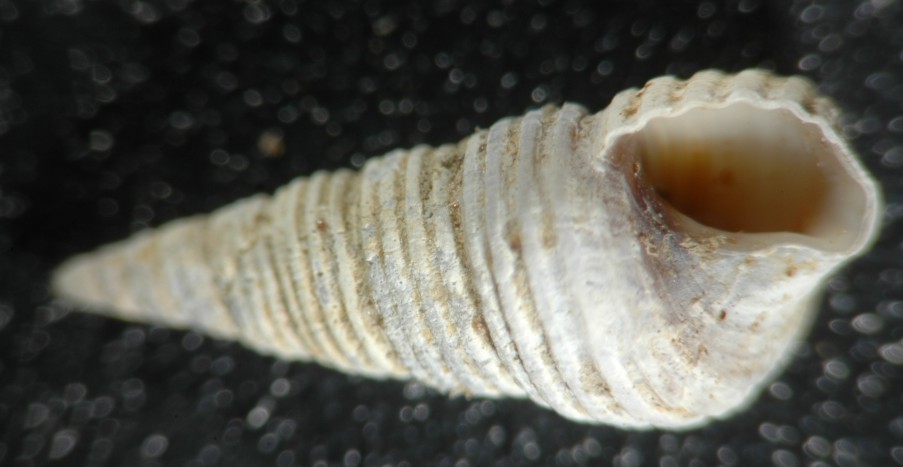How to Distinguish from Similar Species: The other local members of Family Cerithiidae (all in Genus Bittium) have axial ribs and beads. Tachyrhynchus erosus does not have the tiny siphonal canal and is found in deeper water. Batillaria attramentaria is black to tan with white flecks and bands, has a larger siphonal canal, and lives on mud in quiet bays. Cerithidea californica, the California horn snail, lives farther south on mud in quiet bays, and has axial ribs and an expanded aperture.
Geographical Range: Sitka, Alaska to Crescent City, CA [A more slender, spotted variety, B. eschrichtii montereyense, may be found from Crescent City, CA to Cabo San Lucas, Baja California]
Depth Range: Intertidal to 55 m; mostly subtidal
Habitat: Under rocks, in oyster beds, in sand or gravel, on coralline algae, on eelgrass
Biology/Natural History: This is the most commonly found member of this family in this area and the largest Bittium species. They feed on algae and detritus. The empty shell is often occupied by small hermit crabs. Predators include white-winged scoters.
Lays eggs from February to May. There is no pelagic
stage--juveniles
emerge directly from the egg mass.
| Return to: | |||
| Main Page | Alphabetic Index | Systematic Index | Glossary |
References:
Dichotomous Keys:Flora and Fairbanks, 1966
Griffith, 1967
Kozloff 1987, 1996
General References:
Harbo,
1997
Johnson
and Snook, 1955
Kozloff,
1993
Morris,
1966
Morris
et al., 1980
Niesen,
1997
O'Clair
and O'Clair, 1998
Rice,
1973
Scientific Articles:
Web sites:
General Notes and Observations: Locations, abundances, unusual behaviors:
Authors and Editors of Page:
Dave Cowles (2007): Created original page
CSS coding for page developed by Jonathan Cowles (2007)
